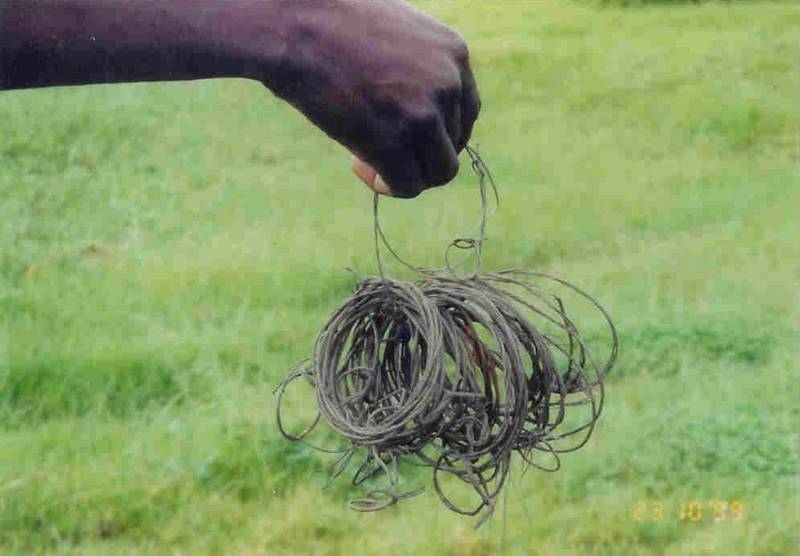Why are gorillas threatened?
Eastern and western gorillas are critically endangered, although they face different threats.
As gorillas are very sensitive to changes in their environment, the mere presence of humans can be a threat. Even in the Virunga Volcanoes, gorillas are continually disturbed: cattle herds, loggers, collectors of grass and honey, smugglers and poachers are active in the national parks in spite of strict laws. In many areas, the exploitation of mineral resources is an additional disturbance.
Poachers set traps, in particular wire snares, in order to catch duikers (forest antelopes). However, gorillas get into the snares too and often they don't succeed in removing the wire. In such a case they can lose a hand or a foot, or even die from gangrene. Vets are sometimes able to remove the snares in those groups habituated to people.
The hunting pressure on Grauer's and western gorillas is very high. They are still killed for their meat by the local human population, even if this is illegal. In addition, local hunters and farmers often kill gorillas because they raid thr fields. One gorilla group can destroy the whole harvest.
Another problem is the increasing destruction of the gorillas' habitat. The deforestation of the rain forests leads to the isolation of small forest islands, which the animals cannot leave any more because there is no adequate habitat close-by. As early as 1959, George Schaller considered this problem critical for the survival of the eastern gorillas. However, forests still are disturbed through timber harvest by logging companies and cleared to make way for cultivation. Roads, initially built to transport the timber, subsequently facilitate the settlement of the forest. In its turn, this leads to increased hunting to provide the workers with food and slash-and-burn cultivation. Bushmeat (including gorilla meat) is frequently transported into the cities with the timber transports.
Another severe threat for the western lowland gorillas is the Ebola virus that already killed most of the gorills in certain areas.

